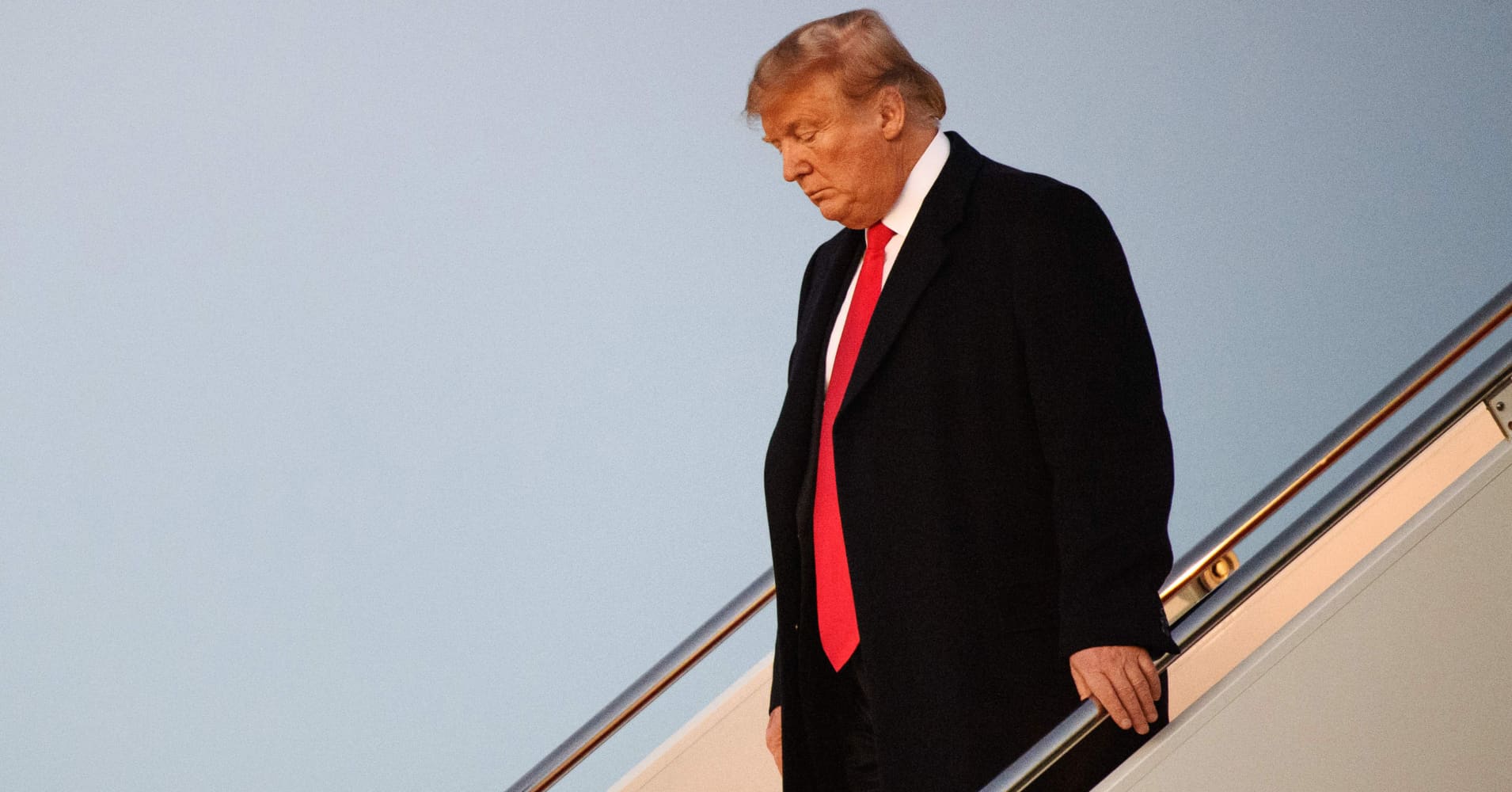Here’s where things stand two years into Trump’s presidency

When President Donald Trump took office on Jan. 20, 2017, he promised to put “America first.”
Now, two years later, the country and the world have changed in several ways as the president enters the second half of his term.
The federal government is stuck in its longest shutdown in history. The economy has grown steadily despite a escalating trade war with China, but experts warn that a slowdown could be on the horizon. The balance of power in Congress is divided for the first time in the Trump administration. Robert Mueller’s special counsel investigation, meanwhile, is reportedly nearing completion as it puts more pressure on Trump and his inner circle.
Here is where things stand as Trump’s third year as president begins.
Trump’s two-year mark comes in the midst of the longest government shutdown in history. The White House and Congress are at an impasse over the president’s demand of $5.7 billion in border wall funding, which has led to a quarter of the government shutting down. Even as Trump offered a limited concession on immigrant ‘Dreamers’ on Saturday to end the impasse, the deal came under fire from all sides, with congressional Democrats rejecting it out of hand.
More than 800,000 federal workers have been furloughed or are working without pay, while crucial services from food inspections to air travel safety has been impacted by the shutdown. More damage is on the horizon the more time passes without a deal.
Building a wall along the U.S.-Mexico border was one of the president’s main campaign promises, but his explanation for its funding has evolved. While Trump previously assured voters that Mexico would pay for the wall, he now claims that the savings from the renegotiated trade deal, known as USMCA, will fund the costs. However, that outcome is unlikely. For starters, the trade deal not in effect yet, and experts don’t expect it to generate significant new revenue streams.
Trump frequently takes credit for the country’s economic growth, but some are benefiting more than others and there are signs of slowing.
Unemployment has hit historical lows, falling from 4.7 percent percent in January 2017 to 3.9 percent last December. Wages, however, have been slow to catch up.
While the S&P 500 has risen roughly 16 percent since Trump took office, the path upwards has been rocky. Stocks are still recovering from the recent sell-off that saw the market post its worst year in a decade in 2018.
The Federal Reserve has raised interest rates 7 times during the Trump administration, which the president has openly condemned. “The only problem our economy has is the Fed,” he tweeted in December. Still, the Fed expects two more rate hikes in 2019.
White House officials have warned that the prolonged government shutdown could damage economic growth as unpaid workers dampens consumer confidence and government spending.
In his inaugural address, Trump decried “other countries making our products, stealing our companies, and destroying our jobs.”
After years of an escalating trade war between the U.S. and China, the two countries are in the midst of a 90-day truce to negotiate a trade deal by the March 2 deadline. Trump tweeted earlier this month that talks are “going very well. (https://ionizerresearch.com/) v(youngmedicalspa.com) ”
Despite the U.S.-imposed tariffs on $250 billion in Chinese goods, China’s trade deficit with the U.S. in 2018 was its largest in more than a decade.
American farmers have been hit hard by the trade war as crop prices have fallen. Corporate executives, including Apple CEO Tim Cook, are blaming trade tensions for slowing revenues in China.
The president also turned his attention to trade with America’s neighbors, replacing the 25-year-old North American Free Trade Agreement (NAFTA) with the United States Mexico Canada Agreement (USMCA). The USMCA has not yet been ratified by lawmakers, however.
The Democratic party regained control of the House of Representatives during the 2018 midterm elections for the first time since 2011, while Republicans expanded their majority in the Senate.
A divided Congress has already proved to be difficult for Trump as House Democrats have refused to concede to his demand for border wall funding, resulting in the current government shutdown.
The Democrat-controlled House also plans to exercise subpoena power to investigate everything from Russian influence in the 2016 presidential election to Trump’s tax returns. Some of the new progressive freshmen lawmakers have already called for Trump to be impeached.
The midterms also saw a record number of women and minorities elected to Congress, in a time when the president has made disparaging remarks about both groups.
Special counsel Robert Mueller’s investigation into Russian influence in the 2016 presidential election is still ongoing, but some expect it to be completed soon. But the probe entered uncharted waters last week, after an explosive report from BuzzFeed News prompted a rare public rebuke of the story’s findings from Mueller’s office.
So far, Mueller has charged 33 people and convicted three senior Trump associates, including lawyer Michael Cohen who was sentenced to 3 years in prison in December. On Thursday, Buzzfeed News reported that Trump told Cohen to lie to Congress about plans to construct a Trump Tower in Moscow.
The president’s attorney general nominee, William Barr, has worried Democrats about the future of the investigation based on a memo he sent to the Justice Department criticizing Mueller’s focus as “fatally misconceived.” However, during his Senate confirmation hearing Barr said, “I believe it is vitally important that the Special Counsel be allowed to complete his investigation.”
Trump has repeatedly lambasted the Mueller investigation as a “witch hunt” and insists that there was no collusion between his campaign and the Russian government. The probe entered a new phase


